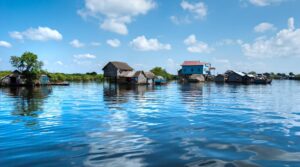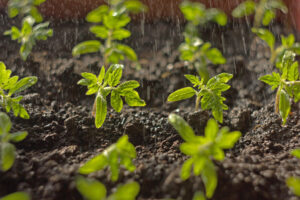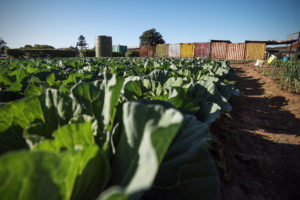Let it reign: The new water paradigm for global food security
Let it Reign highlights key facts, conditions and trends regarding water aspects of food production, consumption and ecological sustainability. It presents policy recommendations within governance, capacity building/awareness raising and financing in order to improve water productivity and increase the possibility to produce the food needed, improve diets, and raise consumer awareness – all in an equitable and ecologically sustainable manner.

The food security issue is alarming: food needs are increasing, and food consumption is moving towards more water-intensive items. Irrigation possibilities are limited and agricultural land is shrinking. In pursuit of the human livelihood improvements identified in the UN Millennium Goals (MDGs), however, co-ordinating efforts in sectors can generate substantial synergies at a time when globally food consumption patterns are changing rapidly.
Co-ordination is needed since today food consumption drives food production, which is dependent on water. Consumer food preferences in combination with new patterns in the processing and trade of food items are changing the consumptive use of water for food production and impacting the already stressed water resources, eco systems and the water available for other societal uses. Yet food production will always be highly water consuming, from both the “green” and “blue” water perspectives. For the projected per capita human diet of 3000kcal/day, water needs are 70times greater than for basic household water needs.
Co-ordination is also needed since undernourishment is trending upwards – 852million people are hungry today. Paradoxically, overnutrition is equally rampant. These public health threats hinder people from fighting hunger, poverty and disease. This is the dilemma, and the opportunity. Eliminating undernourishment by 2025 may require as much additional water as is already withdrawn (often unsustainably) today for agriculture, industry and domestic uses; improved greenwater use and irrigation are crucial. Improved access to food, and the resource implications of trends in food consumption patterns also warrant due attention.
This report highlights key facts, conditions and trends regarding water aspects of food production, consumption and ecological sustainability. It presents policy recommendations within governance, capacity building/awareness raising and financing in order to improve water productivity and increase the possibility to produce the food needed, improve diets, and raise consumer awareness – all in anequitable and ecologically sustainable manner.
Enhance Food Production for a Growing Humanity
In both rain fed and irrigated food production systems, the potential to improve water productivity, i.e. to produce more food per unit of water, is substantial. Measures required include:
- Improved management of water in irrigated and rain fed agriculture, based on secure water use rights and land tenure
- Improvement of biological, chemical and physical properties of the soil through i.a. appropriate tillage practices
- Dryspell mitigation though rainwater harvesting and supplementary irrigation
- Effective arrangements and support services for marketing, affordable credit, technological improvements and extension services, with particular focus on rain fed agriculture
- Investment in new irrigation and storage infrastructure and improved management of existing irrigation
Food Consumption Trends: Water and Health Implications
Globally, food consumption patterns are changing rapidly. These changing patterns are increasingly becoming drivers for food production. The composition and size of the consumer’s new food basket implies a substantial increase in the pressure on water and natural ecosystems.
In some developing regions of the world, undernourishment is increasing. In others, it is slowly being overcome. Paradoxically coexisting with undernourishment is malnutrition, including obesity, which is increasing in both developed and developing countries. These public health threats impede the ability of people to fight obesity, overcome poverty, resist disease and achieve other MDG-related livelihood improvements.
It is of paramount importance to increase access to food and water so that people can lead healthy and productive lives. Furthermore, we need to change the consumption patterns. Measures required include:
- Raised awareness of, and incentives provided for consumers to chose food products with high nutritional value per drop of water
- Collaboration with the food processing and retail industries to develop and market food products with high nutritional value per drop of water
- Social safety nets to ensure that the poor get access to proper nutritional security



